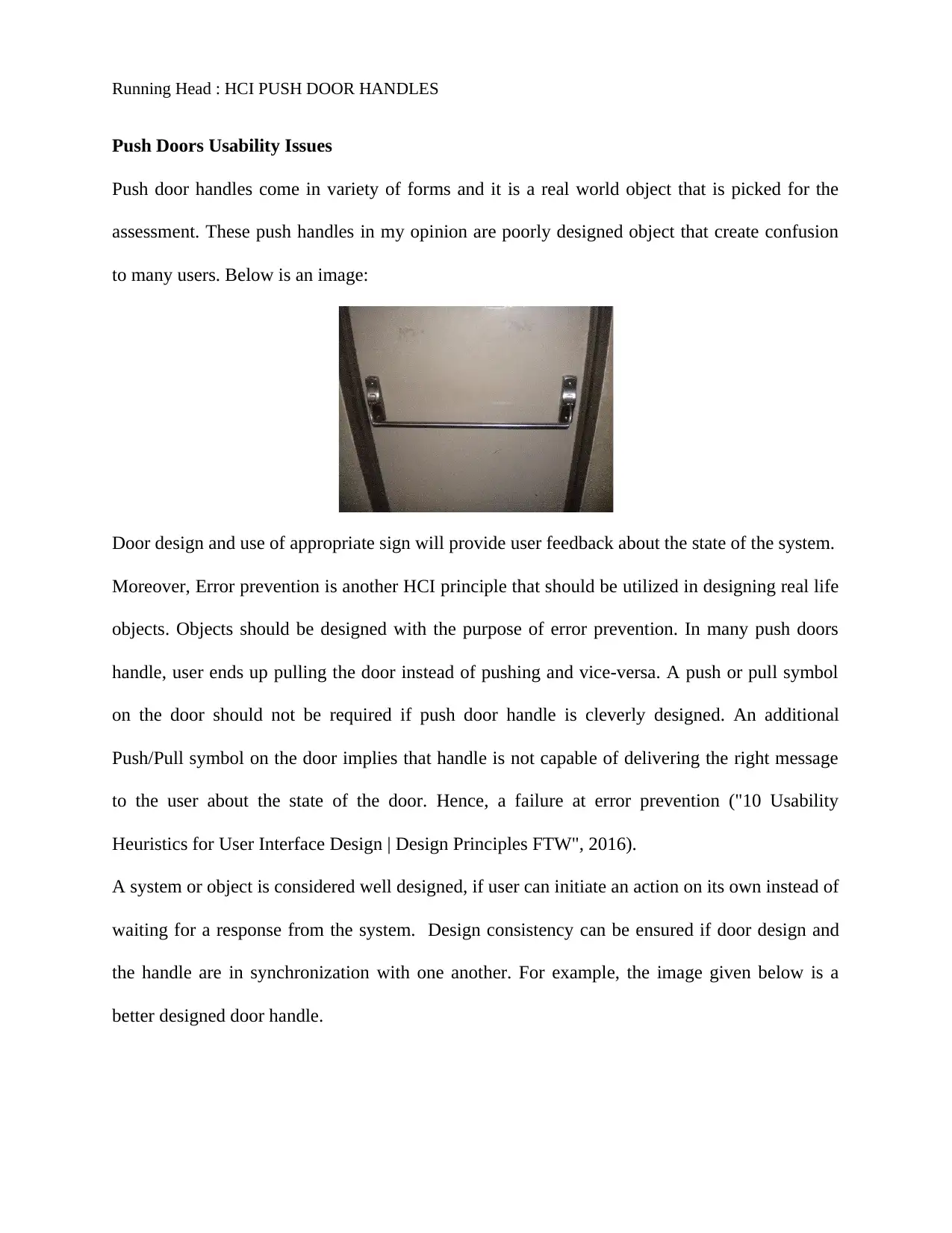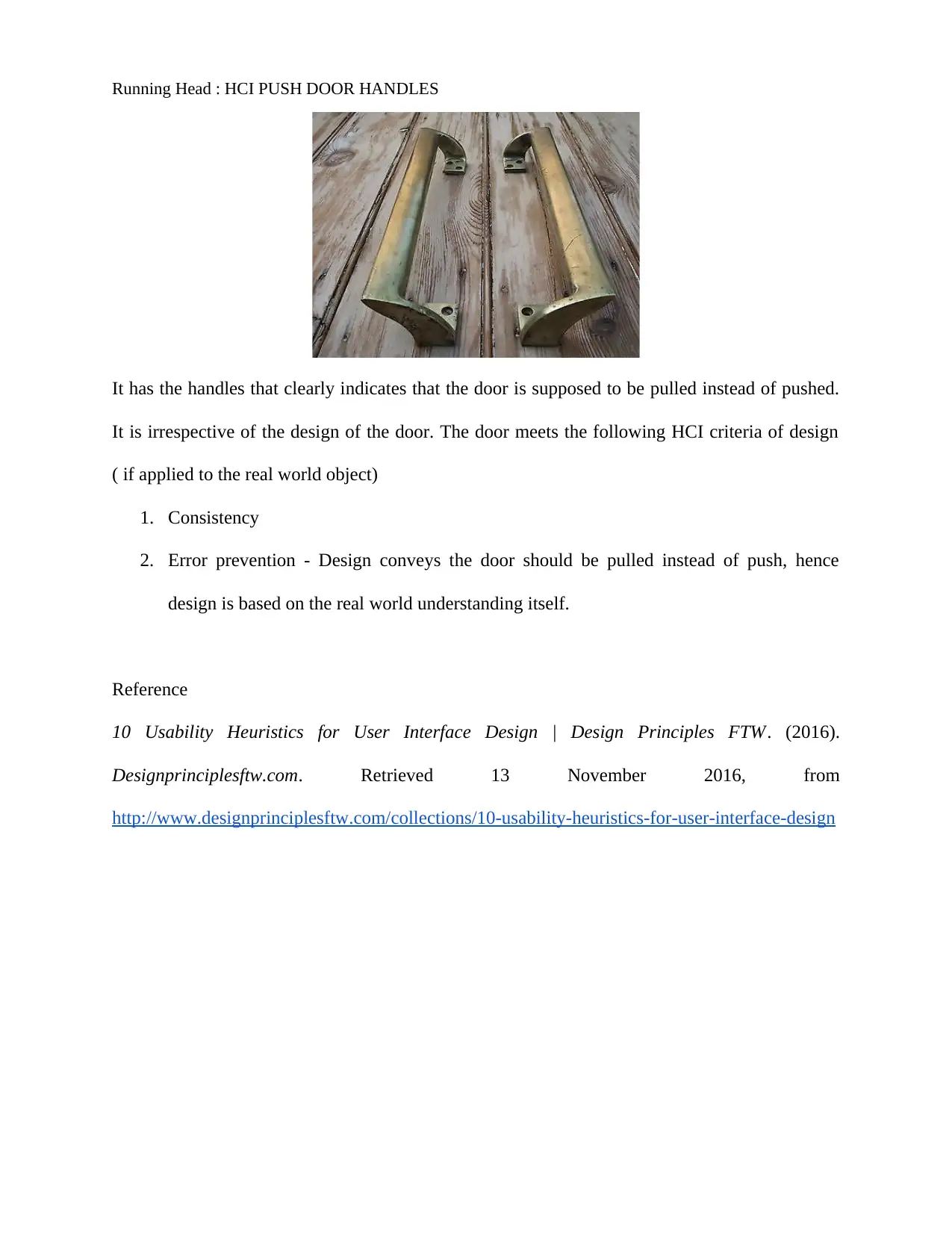Human-Computer Interaction Analysis of Push Door Handles and Usability
VerifiedAdded on 2019/09/20
|3
|368
|339
Homework Assignment
AI Summary
This assignment analyzes the usability of push door handles using Human-Computer Interaction (HCI) principles. It focuses on the common issue of users pulling doors designed to be pushed and vice-versa, highlighting the importance of clear design. The assignment emphasizes the significance of error prevention in design, arguing that a well-designed handle should intuitively communicate its function, eliminating the need for additional signage. The study references the '10 Usability Heuristics for User Interface Design' and discusses how design consistency, such as the relationship between the door and handle, impacts user experience. The assignment also provides an example of a better-designed door handle that clearly indicates the action required (pull), regardless of the door's overall design.
1 out of 3









![[object Object]](/_next/static/media/star-bottom.7253800d.svg)